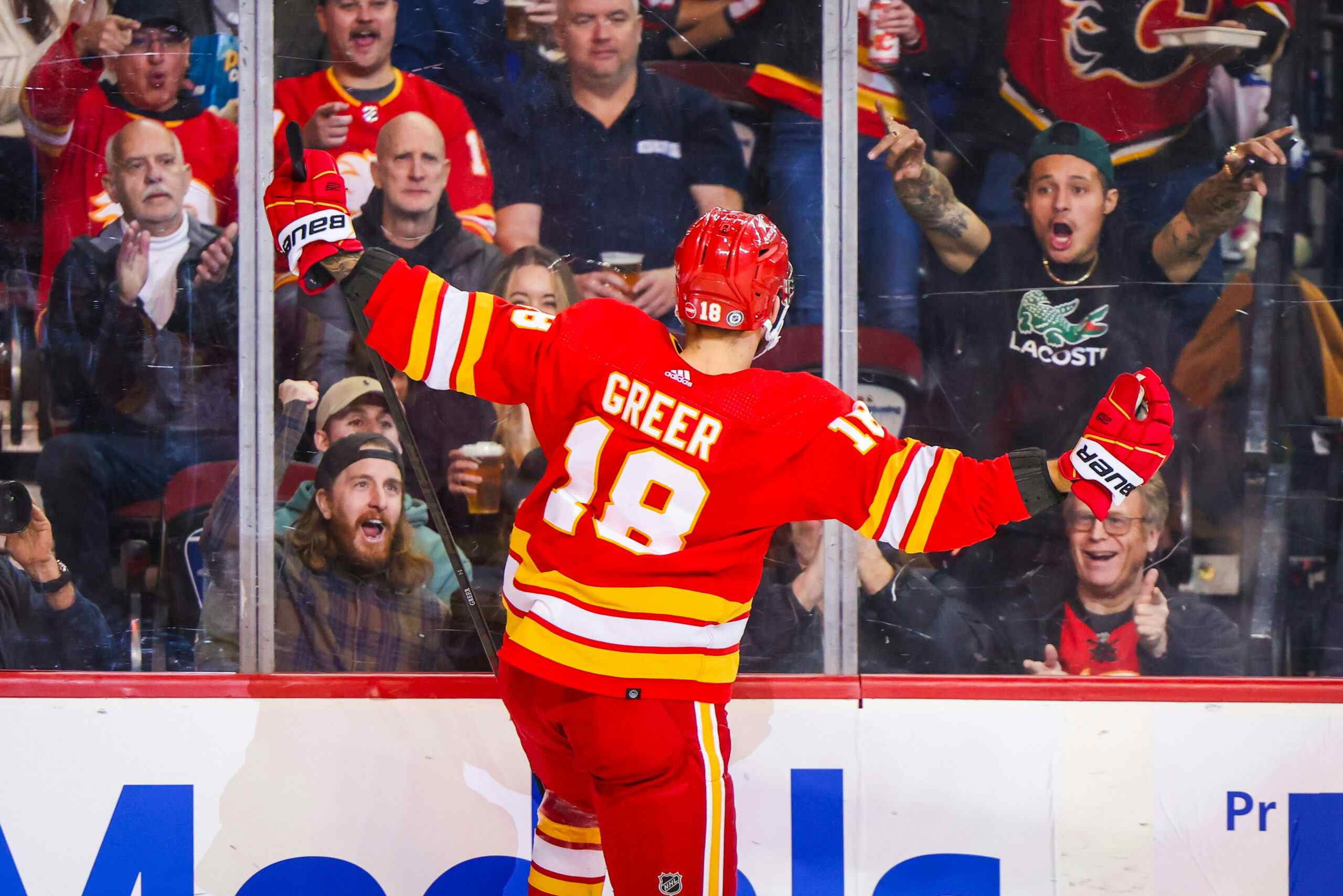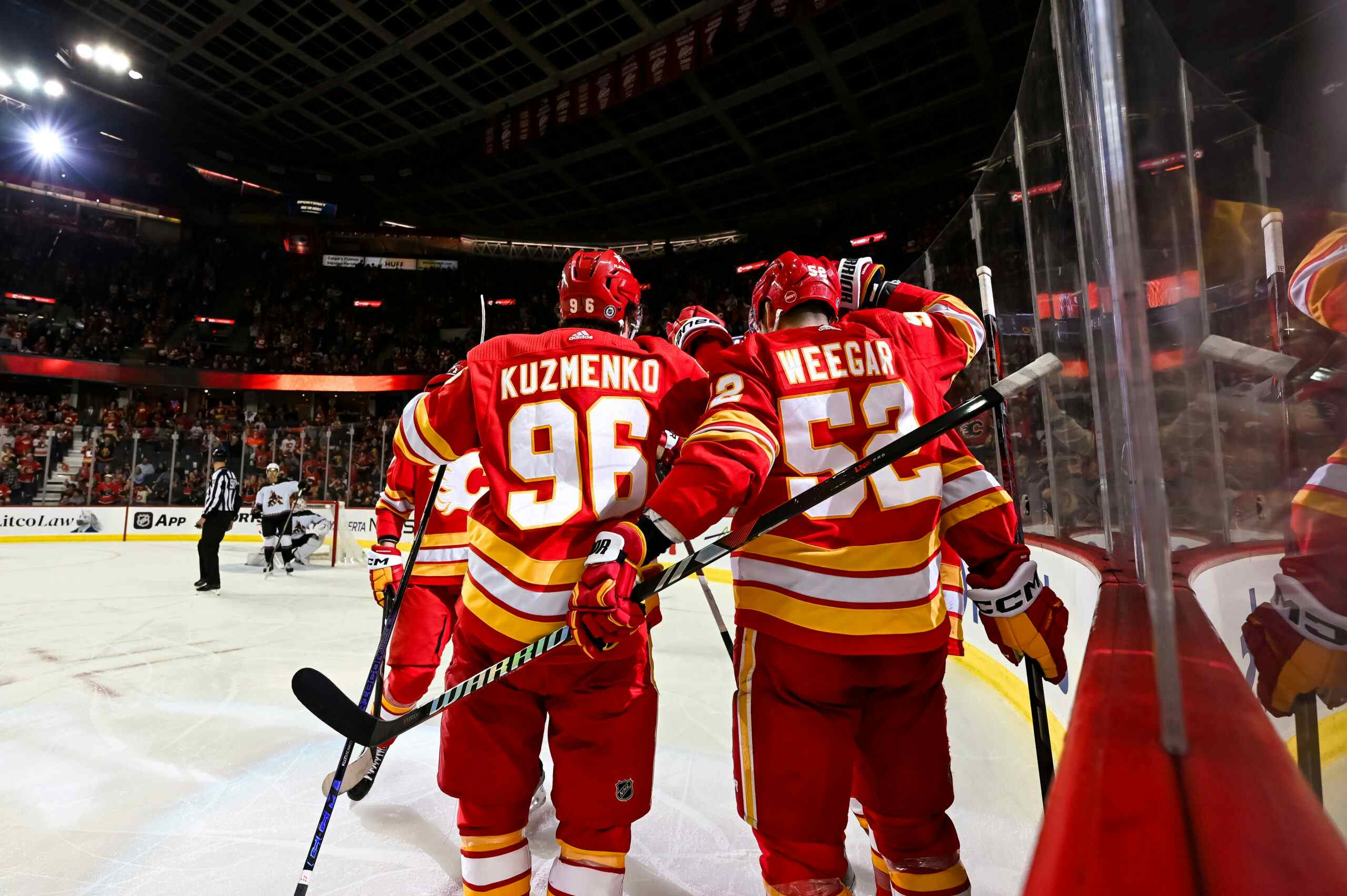A Closer Look at John Gaudreau
By Kent Wilson
11 years agoI usually save this sort of analysis for the off-season, but now that Johnny Gaudreau is the Flames most important, high profile prospect outside of Sven Baertschi (and whoever they pick in the top-5 this summer), I didn’t want to wait on things. It was recently announced that Gaudreau would be returning to Boston College to play next year (killing any chance of him turning pro any time soon) so this seems topical as well.
As many probably already know, Gaudreau had a massive season this year. He led Boston College in scoring with 51 points in 35 games, won a gold medal with the US team in the World Junior Hockey Championships and is a finalist in the Hobey Baker race (College’s "best player" award), something that is almost always bestowed on guys two or three years his senior. Oh, Gaudreau was also named Hockey East’s player of the year and BC fans are so enamoured with the 19-year old that they are making shirts in his honor.
Not bad for a tiny guy who was a 4th round pick.
Gaudreau vs Gerbe
The enduring question for any prospect is: will he be able to make it work as a pro? Gaudreau has constantly excelled at every level he has played at thus far despite his diminutive stature, but that’s true of a lot of guys until they try to break into the show.
One potential comparable is the NHL’s current holder of the "league’s smallest dude" title – Nathan Gerbe. Andrew Walker mentioned him as a mirror for Gaudreau on twitter this morning:
It’s a natural comparison. Beyond the size thing, Gerbe was also a big scorer for BC, a Hobey Baker finalist in 2008 and a 5th round pick for the Sabres. Let’s see just how close the two players are in the same seasons:
Nathan Gerbe
| Season | points | PPG | team rank |
|---|---|---|---|
| 18-19 | 18 | 0.46 | 8th |
| 19-20 | 47 | 1.15 | 2nd |
| 20-21 | 68 | 1.58 | 1st |
John Gaudreau
| Season | points | PPG | team rank |
|---|---|---|---|
| 18-19 | 44 | 1.00 | 2nd |
| 19-20 | 51 | 1.46 | 1st |
| 20-21 | NA | NA | NA |
As you can see, Gaudreau is tracking ahead of Gerbe at this point in their respective careers. Gerbe developed into a difference maker by his sopohmore season, but Gaudreau was already there as a freshman. The latter’s average point-per-game pace in two seasons (1.20) is superior to Gerbe’s college career average (1.08), even with that monster final season under Gerbe’s belt. At the same age, Gerbe had scored 65 points in 80 games (0.81 PPG). Gaudreau has 95 points in 79.
It’s an interesting comparison, although I’m not sure how much we can take from it given it’s only a single guy. Still, Gerbe is an NHLer (albeit not a great one) and Gaudreau is ahead of him in similar circumstances.
Other Context
Two other useful bits of context when it comes to prospect’s output are percentage of team offense and percentage of points scored at even strength. This information tends to weed out the guys who are riding the coattails of a powerful team or are overly dependent on special teams to prop up their numbers.
For example, former Flames first rounder Greg Nemisz put up superficially good counting stats for Windsor in his OHL career, but the Spitfires were a juggernaut and it turned out he was only in on about 25-27% of his team’s scoring in any given season. Legitimate prospects tend to be up over 35% and difference makers usually break 40% or higher. If I recall correctly, Sven Baertschi settled into the 42-43% range for Portland in his final season there.
Luckily I was able to find game-by-game stats for Gaudreau’s regular season in college this year. In 29 games, he scored 47 points, while his team totaled 99 – meaning he was in on over 47% (!) of his club’s total scoring when he was in the line-up. Gaudreau scored 36 of his 47 points at even strength, meaning about 77% of his points came at 5on5 – another very strong number.
Conclusion
Along with the awards and accolades being showered on Gaudreau, the stats paint a fairly rosey picture of the Flames prospect. Johnny Hockey is tracking well ahead of his closest NHL comprable at the same age and his contextual numbers suggest he’s a legitimate difference maker for Boston College who contributes on a high percentage of their scoring and isn’t reliant on favorable special teams ice time to put points on the board.
Recent articles from Kent Wilson





